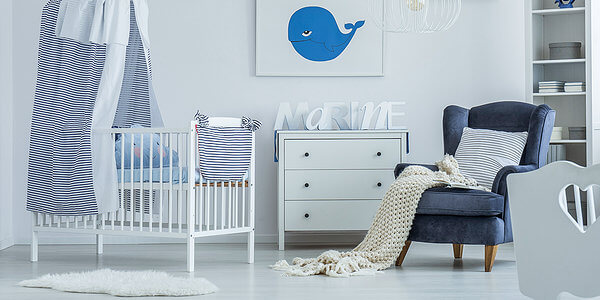You and your partner do everything you can to prepare for the arrival of your new baby. But what about your pets? Up until now they’ve been the center of your world, and by planning ahead, you can make the transition from to humans to three a smooth one for your dog or cat.
First, know that things will be inevitably be different. “Your animal won’t get as much one on one time with you,” says Bonnie Beaver, a professor and animal behavior expert at Texas A&M University’s College of Veterinary Medicine and Biomedical Sciences and author of The Dog Behavior Answer book. “You must scale back the time you spend with your pet, but not too suddenly, because then he will become stressed,” she says.
Preparing your dog for the new baby
A dog is a creature of routine, so it’s essential to help him adjust to the coming changes in advance—preferably, while you’re pregnant, recommends KC Theisen, director of pet care issues for The Humane Society of the United States.
Here, exercises to help your dog adjust to the new baby before her arrival:
- Limit lap time. Sit with a baby doll in your lap so your dog gets used to sitting next to you and not on you, suggests Theisen.
- Create positive nursery associations. “When decorating the room with the baby’s furniture, have fun with the dog in the room so he knows it’s not a scary place,” Beaver says.
- Start routine changes now. “Give your dog the opportunity to get used to different daytime routines,” says Theisen. “If you walk your dog first thing in the morning but now you’ll be feeding your baby first, break out baby bottles, then take him.”
- Remember, the nose knows. A dog’s world revolves around his nose, Thiesen says. Introduce the smells that will be associated with your new baby, like diapers, lotions, shampoo, blankets, and toys, as early as you can. “Subsequently, when the baby is born, wrap her in a blanket, then bring the blanket home and let your dog smell it in a calm reassuring way. Praise him and give him gentle attention while he sniffs so he thinks this smell is great,” she says.
- Cover your crying bases. Hearing is a dog’s most important sense after smell. “A crying baby is a distress signal to all mammals. Your dog can be easily upset by this sound. Let your dog hear recordings of a baby’s cry early,” Theisen says. Try Baby Sounds for Pets by Kristen Overdurf-Abud.
- Create a calmer homecoming. Your dog can easily sense the nervous excitement when you first come home with the new baby, causing him to become over excited himself. Keep the post-hospital environment calm by having your dog stay with a friend, family member, or at doggie daycare for a day or two until you’re settled, Thiesen suggests.
Fido isn’t the only one who’ll need time to adjust, though.
Preparing your cat for the new baby
Cats are naturally attracted to things that smell good and are soft and warm, notes Theisen. “This makes the baby’s sleeping area attractive. Some folks opt to keep the cat from entering the room. Some cats will respect a baby gate. Some families put screen doors in front of the room,” she says.
Since you’ll be blocking the entry to the baby’s room, create alternative spaces that are soft, warm, and appealing for your cat. One idea? Find the window in your home with the best sunbeam and place a soft bed directly in the light.
Pet safety for new babies
Finally, never leave your infant and furry friend together unattended. Even though you’ve worked to prepare your pet for the new baby, animals—and young children—can sometimes act unpredictably, which could result in a serious injury. Always supervise when your baby and pet are together. In time, they’ll likely grow to be the best of friends.




